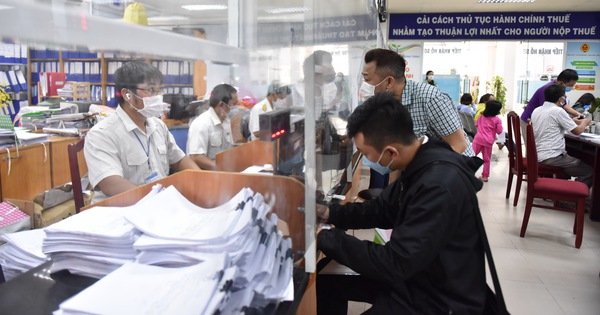Method for comparing the profit margins of taxpayers with those of independent comparables in Vietnam
What are the regulations on method for comparing the profit margins of taxpayers with those of independent comparables in Vietnam? - Tan Dan (Can Tho)

Method for comparing profit margins of taxpayers with those of independent comparables in Vietnam (Internet image)
Regarding this issue, LawNet would like to answer as follows:
1. Method for comparing profit margins of taxpayers with those of independent comparables in Vietnam
Method for comparing profit margins of taxpayers with those of independent comparables in Vietnam according to Article 14 of Decree 132/2020/ND-CP is as follows:
- When to apply the method:
Taxpayers do not have database and information in order to apply the arm’s length price comparison method referred to in Article 13 of Decree 132/2020/ND-CP; taxpayers are unable to compare product-based transactions on the basis of specific transactions in specific comparable products to the extent that these transactions are aggregated according to the business nature and reality, and then successfully select profit margins of appropriate independent comparables; or taxpayers fail to exercise their autonomy over the entire business and production chain, or fail to participate in the execution of related-party transactions prescribed in Article 15 of Decree 132/2020/ND-CP, specifically including:
+ The method for comparison of gross profit to sales (resale price method) shall be applied when the taxpayer sells or distributes products purchased from its related party to unrelated customers and does not create intangible property associated with products sold; does not participate in the process of development, enhancement, maintenance and protection of intangible property under the ownership of its related parties associated with the products sold, carry out processing, manufacturing or installation activities that may lead to any change in the nature and characteristics of these products, or attach trademarks to these products to increase their value.
The resale price method shall not be applied to taxpayers acting as distributors that own intra-group valuable product intangibles with respect to brand names, trademarks and other marketing-related intangibles such as customer lists, distribution channels, logos, images and other brand identity elements for market research, marketing or trade promotion, or incurs expenses from establishment, design of distribution channels, brand identities or after-sale costs;
+ The method for comparing the ratio of gross profit to cost of goods sold (cost plus method) shall be applied when taxpayers that do not own its product intangibles and incurs little risk perform their functions of contract manufacturing, make-to-order manufacturing or toll manufacturing, assembly, processing of products, installation of equipment; procurement and supply of products; supply of services or rendering of research and development services agreed upon with related parties.
The cost plus method shall not be applied to taxpayers that are independent manufacturing companies, or perform various functions like product research, development, building and creation of product brands, trade names, market strategies and product warranty and customer care services;
+ Net profit margin comparison method: The method for comparing the net profit margin shall be used in the cases where taxpayers do not have information necessary for the application of the arm’s length price comparison method; do not have data and information about the accounting method of independent comparables or, because of failure to search comparables with similar functions and products, do not have sufficient grounds for application of the resale price method or the cost plus method; taxpayers performing distribution or manufacturing functions do not own product intangibles or do not engage in development, enhancement, maintenance, protection and exploitation of product intangibles, or does not fall within the scope of application of the method for distribution of profit between related parties in accordance with clause 1 of Article 15 of Decree 132/2020/ND-CP.
- Principles of application:
+ Profit margin comparison method shall be applied according to the principle of non-discrimination concerning operational functions, assets and risks; economic conditions and accounting and bookkeeping methods taken into consideration in a comparison thereof between taxpayers and independent comparables have material effects on the profit margin. If there is any difference causing material impacts on profit margins, then these material differences must be eliminated;
Factors having material impacts on the profit margin encompass: Assets, capital, costs and expenses; rights to control and make decisions in reality to serve the purpose of performing main functions of taxpayers; nature of business industry and market for production and consumption of products; accounting and bookkeeping method and cost structure of products; economic conditions in which transactions occur; commercial or financial relationships of multinational groups; technical assistance, sharing of trade secrets, know-how, utilization of employees working under single or dual employment regime and economic conditions of business industries or sectors in which taxpayers are operating, product specifications and contractual terms and conditions or requirements.
+ Cases of application of the resale price method: The resale price method is applied to certain differences that may have material impacts upon the ratio of gross profit to price of goods sold (net sales) such as costs reflecting functions of the enterprise that is a sales agent, exclusive distributor or distributor performing marketing functions; growth and development levels of product consumption markets; functions performed by taxpayers within the supply chain such as retailing, wholesale supply and accounting methods of parties;
+ Cases of application of the cost plus method: The cost plus method is applied to certain differences that may have material impacts upon the ratio of gross profit to cost of goods, including costs reflecting functions performed by enterprises such as those functioning as contract manufacturers designated by parent companies or intra-group service suppliers; contractual obligations such as durations for delivery of products, costs of quality control, warehousing, terms of payment, and methods for accounting for cost components of products sold, of taxpayers and independent comparables;
+ The net profit margin comparison method shall be applied in such cases as: The method for comparison of the net profit margin shall be applied to certain differences that may have material impacts upon net profit margins, e.g. differences in functions, assets, risks; economic conditions; contractual terms, conditions or requirements and product specifications referred to in Article 10 of Decree 132/2020/ND-CP.
Taxpayers doing business by performing their routine functions, without performing strategic decision-making functions and engaging in transactions of low added value comprise production or distribution enterprises which are not exposed to inventory risk or market risk and do not have sales revenue or costs arising from uses of intangible assets, shall not have to incur operating losses arising from these risks.
- Calculation method:
The profit-comparison method shall use the gross or net profit margins of selected arm’s length comparables for comparison for identifying the corresponding gross or net profit margins of taxpayers.
Selection of profit margins, including gross profit margins or net profit margins based on sales, costs or assets shall depend on the nature and economic conditions of transactions; functions of taxpayers and accounting or bookkeeping methods of related parties. The bases for determination of the profit margin, including accounting data of taxpayers on sales, costs or assets shall not be controlled or decided by related parties.
+ Method for comparing the gross profit to sales (the resale price method):
The purchase price (cost) of a good, service or asset sold by a related party equals (+) the resale price (net sales) of that good, service or asset resold to an unrelated party minus (-) the gross profit divided by the selling price (net sales) of a taxpayer less (-) certain other costs included in the purchase price, such as import duties, customs dues, insurance costs or international transit costs (if any).
The gross profit to the selling price (net sales) of a taxpayer determined by comparing it with that of independent comparables shall equal (+) the selling price (net sales) of the taxpayer multiplied (x) by the gross profit relative to the selling price (net sales) of the selected independent comparables.
The gross profit to the selling price (net sales) of independent comparables shall be calculated as the value falling within the standard arm’s length range of the ratio of the gross profit to the selling price (net sales) of the independent comparables which are selected for adjustments made according to the principles herein stipulated.
The purchase price (or cost) which is adjusted to independent comparables is the taxable price or the cost for tax declaration for determination of corporate income tax obligations of taxpayers.
+ Method for comparing the gross profit to sales (the resale price method):
The selling price (or net sales) of a good, service or asset sold to a related party shall be calculated as the arm’s length cost thereof plus (+) the gross profit to the cost of a taxpayer.
The gross profit to the cost of a taxpayer which is determined based on independent comparables equals (+) the cost paid by a taxpayer multiplied (x) by the ratio of the gross profit to the cost of the selected independent comparables.
The ratio of the gross profit to the cost of the selected independent comparables is defined as the value falling within the standard arm’s length range of the ratio of the gross profit to the cost of the independent comparables which are selected for adjustments made according to the principles stipulated in Decree 132/2020/ND-CP.
The selling price to a related party (or net sales) which is adjusted to independent comparables is the taxable price or the cost for tax declaration for determination of corporate income tax obligations of taxpayers.
+ Net profit margin comparison method:
The net profit margin existing before the interest and corporate income tax to sales, costs or assets of a taxpayer engaged in the transfer pricing are deducted shall be adjusted to the ratio of net profit existing before the interest is taken away to sales, costs or assets of the selected independent comparables, based on which tax obligations of a taxpayer is adjusted or determined.
Net profit excludes the difference between sales and costs of financial activities.
The selected net profit margin is the value within the standard arm’s length range of the net profit margin of independent comparables which are selected for adjustment to or determination of taxable income and tax obligations of a taxpayer according to the principles herein stipulated.
Indicators of the net profit margin existing before the loan interest and corporate income tax are taken away shall be computed under the provisions of legislation on accounting, tax administration and corporate income tax.
- The results of determination of the adjusted profit margin of a taxpayer are the basis for the determination of the taxable income and the corporate income tax payable without causing any reduction in the taxpayer’s corporate income tax obligations to the state budget.
2. Parties having relationships under the law in Vietnam
Parties having relationships according to Article 5 of Decree 132/2020/ND-CP are as follows:
- Related parties are parties having relationships where:
+ A party is directly or indirectly involved in the management, control of, contribution of capital to, or investment in, the other party;
+ Parties are directly or indirectly affected by the management, control of, contribution of capital, or investment, from the other party.
- Related parties referred to in Clause 1 of Article 5 of Decree 132/2020/ND-CP shall be subject to the following specific provisions:
+ An enterprise participates directly or indirectly in at least 25% of the other enterprise’s equity;
+ Each of the two enterprises has at least 25% of its equity held, whether directly or indirectly, by a third party;
+ An enterprise is the shareholder having the greatest ownership interest in the other enterprise, or participates directly or indirectly in at least 10% of total share capital of the other enterprise;
+ An enterprise guarantees or offers another enterprise a loan under any form (even including third-party loans guaranteed by financing sources of related parties and financial transactions of same or similar nature) to the extent that the loan amount equals at least 25% of equity of the borrowing enterprise and makes up for more than 50% of total medium and long term debts of the borrowing enterprise;
+ An enterprise appoints a member of the executive board responsible for the leadership or control of another enterprise provided the number of members appointed by the former accounts for more than 50% of total number of members of the executive board responsible for the leadership or control of the latter; or a member appointed by the former has the right to decide financial policies or business activities of the latter;
+ Both related enterprises appoint more than 50% of membership of the executive board or have one member of the executive board authorized to decide financial policies or business activities who is appointed by a third party;
+ Both enterprises are managed or controlled in terms of their personnel, financial and business activities by individuals, each of whom is in one of the following relationships with the others such as a wife, husband, natural/foster father, natural/foster child, natural/foster older/younger sibling, brother/sister-in-law, maternal/paternal grandfather/grandmother, maternal/paternal grandchild, and maternal/paternal aunt, uncle and nibling;
+ Both business entities have transactions, either between their head offices and permanent establishments or between permanent establishments of overseas entities or individuals;
+ Enterprises are put under control of one individual through either his/her capital participation into that enterprise or his direct involvement in the administration of that enterprise;
+ In other cases where an enterprise has their business activities managed, controlled or decided de facto by the other enterprise;
+ A related enterprise performs the disposition or acquisition transaction in at least 25% of their equity within a tax period; the borrowing or lending transaction in at least 10% of their equity performed at the transaction time falling within a tax period with a person holding the executive office or the controlling interest in the enterprise, or with a person in one of the relationships prescribed in point g of clause 2 of Article 5 of Decree 132/2020/ND-CP.
- Key word:
- independent comparables
- in Vietnam
- Cases of land rent exemption and reduction under the latest regulations in Vietnam
- Economic infrastructure and social infrastructure system in Thu Duc City, Ho Chi Minh City
- Regulations on ordination with foreign elements in religious organizations in Vietnam
- Increase land compensation prices in Vietnam from January 1, 2026
- Determination of land compensation levels for damage during land requisition process in Vietnam
- Who is permitted to purchase social housing according to latest regulations in Vietnam?
-

- Emergency response and search and rescue organizations ...
- 10:29, 11/09/2024
-

- Handling of the acceptance results of ministerial ...
- 09:30, 11/09/2024
-

- Guidance on unexploded ordnance investigation ...
- 18:30, 09/09/2024
-

- Sources of the National database on construction ...
- 16:37, 09/09/2024
-

- General regulations on the implementation of administrative ...
- 11:30, 09/09/2024
-

- Notable new policies of Vietnam effective as of ...
- 16:26, 11/04/2025
-
.Medium.png)
- Notable documents of Vietnam in the previous week ...
- 16:21, 11/04/2025
-
.Medium.png)
- Notable documents of Vietnam in the previous week ...
- 16:11, 02/04/2025
-
.Medium.png)
- Notable new policies of Vietnam to be effective ...
- 16:04, 02/04/2025
-
.Medium.png)
- Notable new policies of Vietnam effective from ...
- 14:51, 21/03/2025

 Article table of contents
Article table of contents
